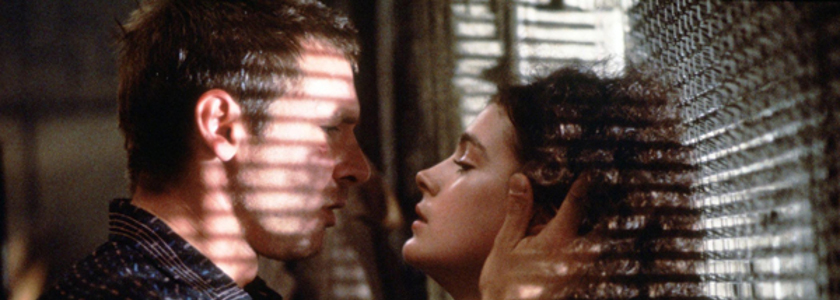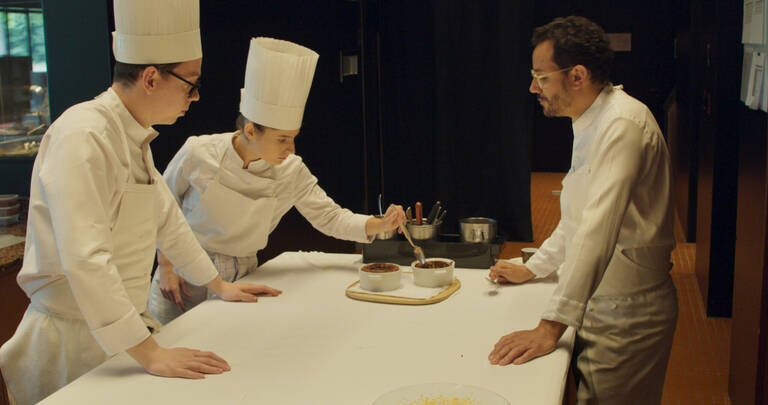
Dir. Ridley Scott, US, 1982/2007, 117 mins
Cast: Harrison Ford, Rutger Hauer, Sean Young, Daryl Hannah
Professor Stephen Hawking made this statement regarding artificial intelligence in December of 2014. The idea that technology will threaten the continued survival of the human race has been a continual source of scientific and cinematographic exploration since the earliest advent of the computer. Hawking’s remarks followed the assertion of Rollo Carpenter that his ‘Cleverbot’, “learns from its past conversations, and has gained high scores in the Turing test, fooling a high proportion of people into believing they are talking to a human.”
In a year where both The Theory of Everything and The Imitation Game scooped top prizes in many of the most prestigious award ceremonies; it seems prescient that the BFI have managed to plan their nationwide release of Blade Runner: The Final Cut to coincide with the current interest in the increasing symbiosis between machines and humanity, as explored by Hawking and Turing.
The enduring power of a film such as Blade Runner is that it is one of ideas, ideas on the nature of humanity, paranoia, alienation and the yearning to be loved and acknowledged. It is as relevant now, perhaps more so than when it was originally released in 1982.
Rick Deckard (Ford) lives in an oppressive Los Angeles, in the year 2019. He is a blade runner, a policeman tasked to track down rogue replicants who seek to secrete themselves among humanity. The quasi-human replicants were originally designed as slave and pleasure drones but increased technological advancements from the Tyrell Corporation make it more and more difficult to draw the line measuring the end of a human and the beginning of a ‘biorobotic android’.
It is now 33 years since Blade Runner shocked and enthralled cinema audiences and its enduring popularity has created a time-lapse, where the ‘future’ seen then is but a mere four years in our current future. This allows the audience to play ‘spot the prediction’ with the original film. Looking Back to the Future, cinephiles were quick to ask where our hover boards are. With Blade Runner it seems that one of its more outlandish ambitions – something which might pass Deckard’s Turing test – is closer than we might think, or be comfortable with.
This ‘final cut’ is a 25th anniversary celebratory project which allowed Ridley Scott to take complete artistic control over his masterpiece and show the Blade Runner he always envisioned. In 2007, this ‘definitive’ version was created and fully restored from the original 1982 negatives (and it feels like it). Nothing is lost from the unique, brooding, bleak atmosphere that pervaded the original. For a die-hard fan, everything looks as it did, but amplified by sharpened and enhanced visuals matched by a remodelling of the immersive static tension of a remarkable soundtrack.
In 2015, there are Google phones called ‘Nexus’, with even a model ‘6’ to match the model number of Blade Runner’s most advanced and dangerously too-human replicants. As phones begin to talk to us, take commands and learn our speech patterns it makes you wonder what our own relationship with technology will be in 2019.
Perhaps more remarkably, and closer to the human-machine dichotomy, is the case of Oscar Pistorius and his artificial legs. A man as emotionally capable as any human, uses technology to become physically equal to some of the fastest men on the planet. He is dubbed ‘Blade Runner’ and the irony is not only literal.
He was cleared to compete against able-bodied athletes in 2008 when an IAAF ruling that his blades gave him an unfair advantage was overturned by the Court of Arbitration for Sport (CAS).
- BBC Sport website
In Scott’s dystopia, replicants are engendered with vastly superior physical strength to the rest of humanity. Pistorius’ nickname inverts the original replicant-human qualities’ from the film, where the bioandroids are emotionally naive but are stronger and quicker than humanity. As reality and science-fiction bleed together, it underlines the enduring symbolism invoked by the adaptation of the book Do Androids Dream of Electric Sheep?.
Technology plays an increasing part in overcoming physical frailty to empower disabled people such as Stephen Hawking to compete in the same intellectual and emotional arena as the able-bodied. Without his artificial speech system it is difficult to imagine the kind of life he would be suffering, without the ability to express himself. Without Alan Turing and his enigma cipher, the early computer, Europe could not have broken the Nazi code and modern computer science would possibly have meant that a film like Blade Runner would be impossible to imagine some 40 years later.
Whether artificial intelligence and human development can coexist is a burning modern question. Blade Runner is not only a 33 year-old spark, but a continually alight fire illuminating the debate, albeit in the sphere of theory and imagination.
Even if you own one of the home entertainment versions of this cut, it is well worth the admission fee to experience this timeless thriller on the big screen, as nature intended.
Blade Runner’s rerelease in cinemas from April 3rd marks the final chapter in the BFI’s Sci-Fi: Days of Fear and Wonder, a UK-wide celebration of film and television’s original blockbuster genre.
Review by George Meixner
[SRA value=”5″ type=”YN”]



